While browsing St. Patrick’s Day ideas on the internet, the other night, I got sidetracked by a penny science experiment that I noticed. It was actually really interesting, sounded easy and I had everything on hand. That never happens. I knew it would be a perfect homeschool project to break up our daily routine. Oh, and…maybe this is a stretch, but…pennies/lucky/St. Patrick’s Day…it works, right?? So, not only is it educational, but it’s festive…okay, it’s not.
So, first off…here’s a few little tid-bits that I shared with me lads…
– The first Lincoln Cents (otherwise known as the “penny”) was made in 1909 to celebrate Lincoln’s 100th birthday. It originally had 2 wheat stalks on the back.
– In 1959, the back of the penny was changed to the Lincoln Memorial, to celebrate Lincoln’s 150th birthday.
– In 2009, to celebrate Lincoln’s 200th birthday, there were 4 new penny backs that came out, depicting different scenes from Lincoln’s life.
– Before 1982, pennies were 95% copper and 5% zinc. Now, they are 97.5% zinc and only 2.5% copper.
And, now for the project…
You know how pennies always look so grimy and nasty?? Well, they are. Don’t suck on them. But, even if you use soap, water, and a scrub brush, you can’t bring them back to a shiny color. Why?? Well, because that poopie brown color is actually copper oxide, which is a reaction that happens from the copper in the penny being in contact with the oxygen in the air. Copper Oxide = Poopie Brown.
The only way to restore the shininess to the pennies is to put them in contact with an acid…and vinegar mixed with a little salt really does the trick! So, first I dumped our penny jar out on the counter. Do you have a penny jar? I always thought it wasn’t earning it’s keep in my home, until the other day. I then had the boys pick out some of the dingiest ones. This took a while because they were armed with their new penny facts, and had to check out the backs on nearly all of them and also find ones made before 1982 (because those are the ones that are mostly copper)…just because they wanted to.
Then I had them take their pennies to the sink to scrub them, as good as they could, with soap and water. I told them to get them sparkly clean…of course, it’s not possible.
When they realized they weren’t getting anywhere with it, I taught them about the copper and oxygen reaction and that they needed an acid to dissolve it.
So, we mixed about 1/4 cup white vinegar and a tsp. of salt in a bowl…
When you put the pennies in the vinegar, it’s so cool, you just watch them slowly change, right before your eyes! Some of the pennies do best with a little finger rubbing, but you can literally see them changing by just having them sit there.
Here’s a little before/after…
My boys loved this little experiment, they wanted to get the whole jar clean…which is fine with me, cause I’ve had an idea brewing for St. Patrick’s Day that entails pennies…I would much rather have them shiny.
But, to keep the penny-love going, I told them how there are some very special pennies that they should watch out for (they could be worth lots of money)…
The 1943 copper penny. In 1943, pennies were made out of steel so that the copper could be used to make weapons for WWII. But, due to a probable mistake, there were still several made out of copper (40 known to exist, so far.) If you can find a 1943 penny that isn’t steel (silver) but is normal penny color…you’re in luck…as in, tens of thousands of dollars luck! You just need to verify that it’s not counterfeit, test it with a magnet. If the magnet sticks, it’s not copper…it’s steel that’s been coated.
It’s funny…I totally forgot that I had a penny collection from when I was in junior high, down in my storage room. You can see that I have 3 of the 1943 steel pennies…no copper, darn.
Anyway, also valuable is the 1955 penny, called the “double die”…the press was misaligned and some of the pennies came out with the words and date doubled…not all 1955 pennies are double died, but if you find one it can also be worth hundreds to thousands of dollars…of course, I didn’t have that one either.
So, there you have it…the penny experiment. As always, if you like a post…please comment, “like” it, share it, stumble it, tell your friends, whateva! It’s those little validations that keep bloggers blogging 🙂

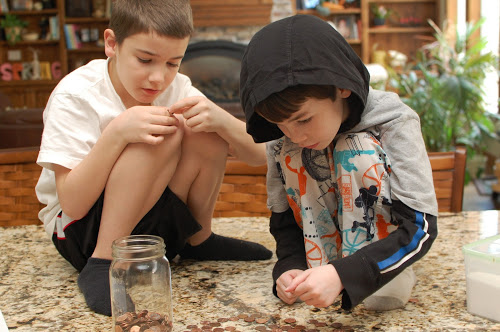
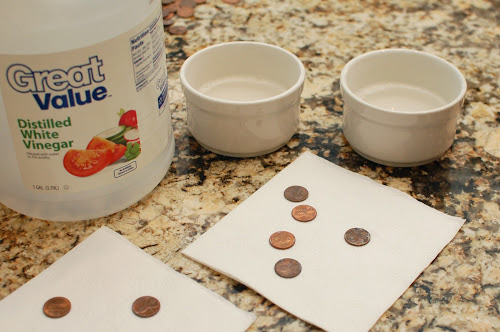
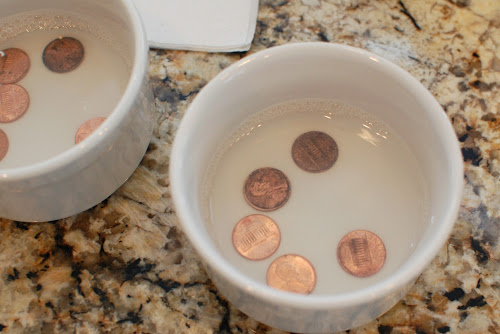
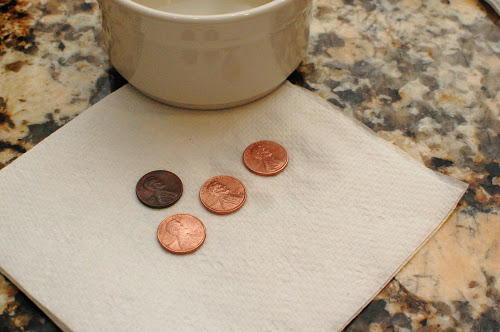
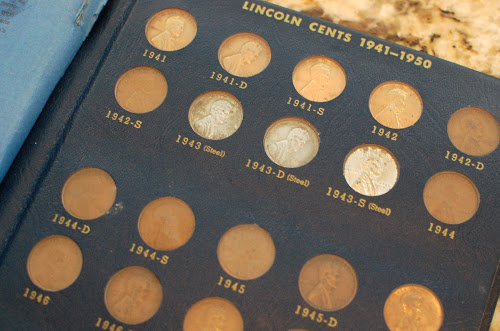
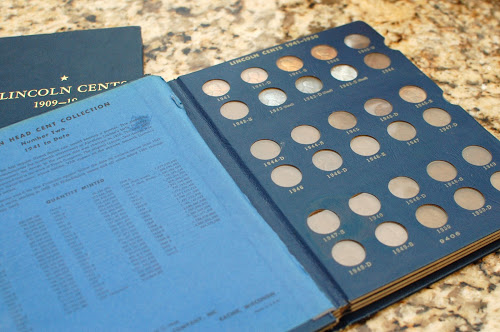
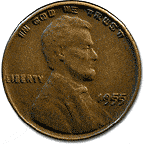


We just did this. I think I liked it better than my boys did. My favorite part was to watch the bubbles come off of the pennies as the grim was eaten away.
Thanks for the pillow and mattress cover! It is much appreciated!
Your welcome, Wendy! Thanks for the comment 🙂
Good idea! I think we will give it a try.
My boys will love this experiment! I always thought my dad was crazy for storing a few buckets of pre-1982 copper pennies. Now that people are stealing copper wire because it’s so valuable, I think my dad was a smart guy. He still hasn’t cashed them in yet, though.
That’s interesting that he collected those pennies! I’m curious to hear if there is actually a market for them right now and what they are worth. Thanks for the comment 🙂
thanks, we are trying this right now! my kids are a bit young (5,3), so their patience is not long, but seperating the orange (pennies) and the silver coins was fun 🙂 Oldest I found so far is 1949! amazing!
Cute! Halle has an obsession with money lately- she would love this!
My kids will love this! They’re always wanting to do little science experiments. Thanks!